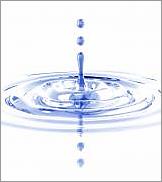
Improving water quality throughout Minnesota has been the focus of ongoing efforts by organizations like the Water Resources Center (WRC), a Consortium member. An article from Minnesota Public Radio lays out potential solutions, referring to a recent report by the WRC "that recommends strategies like better regulation of farm drainage systems and moving away from planting corn and soybeans to perennial crops." Fertilizers like nitrogen and phosphorus from Midwestern farm fields wash into the Mississippi River and other watersheds, causing contamination. Road salt and golf course runoff are also among the culprits. One dramatic outcome is this summer's largest-ever "dead zone" downstream in the Gulf of Mexico, an area the size of New Jersey "where water doesn't have enough oxygen for fish to survive," according to NPR. Don Scavia, a researcher at the University of Michigan, "describes it as a kind of hidden environmental disaster. 'You know, it's 8,000 square miles of no oxygen. That can't be good!'" One example of an effective solution that Scavia points to is mandatory limits on nutrient pollution in Chesapeake Bay, which have helped the bay begin to recover since being put in place in 2010.